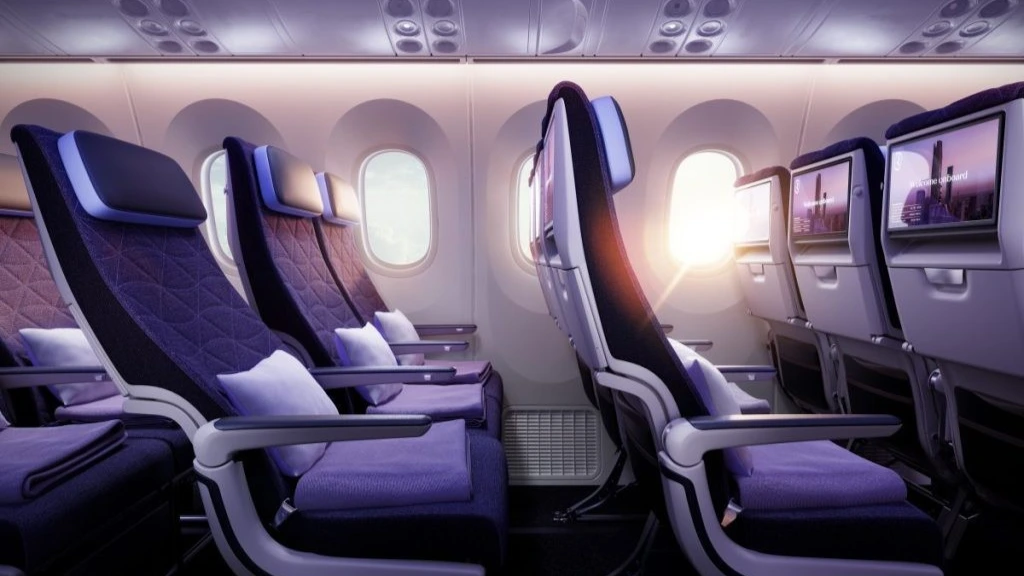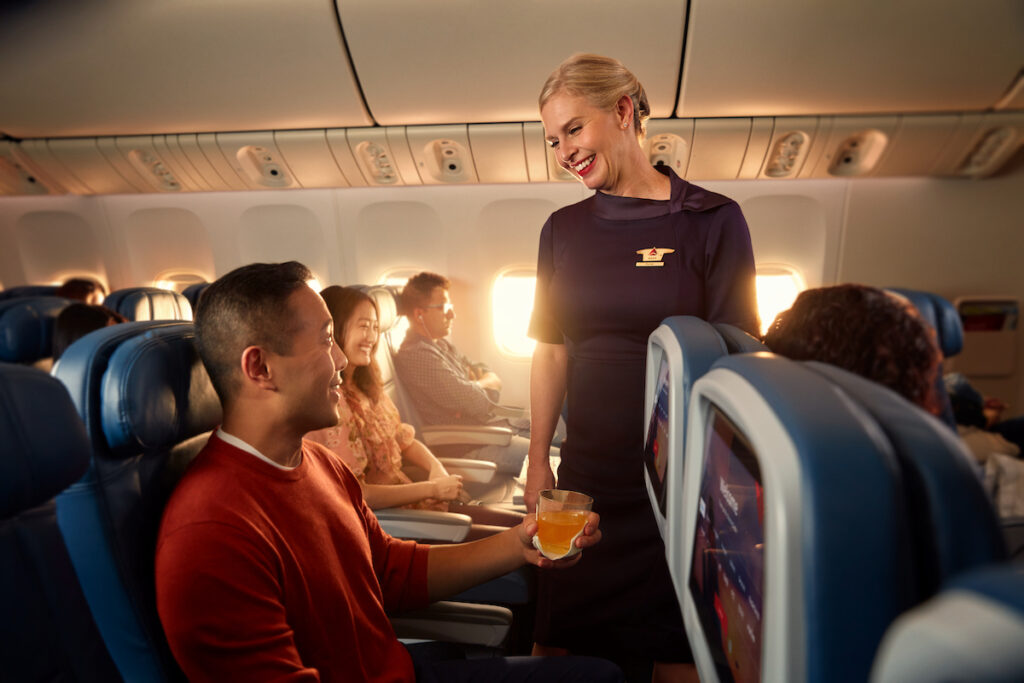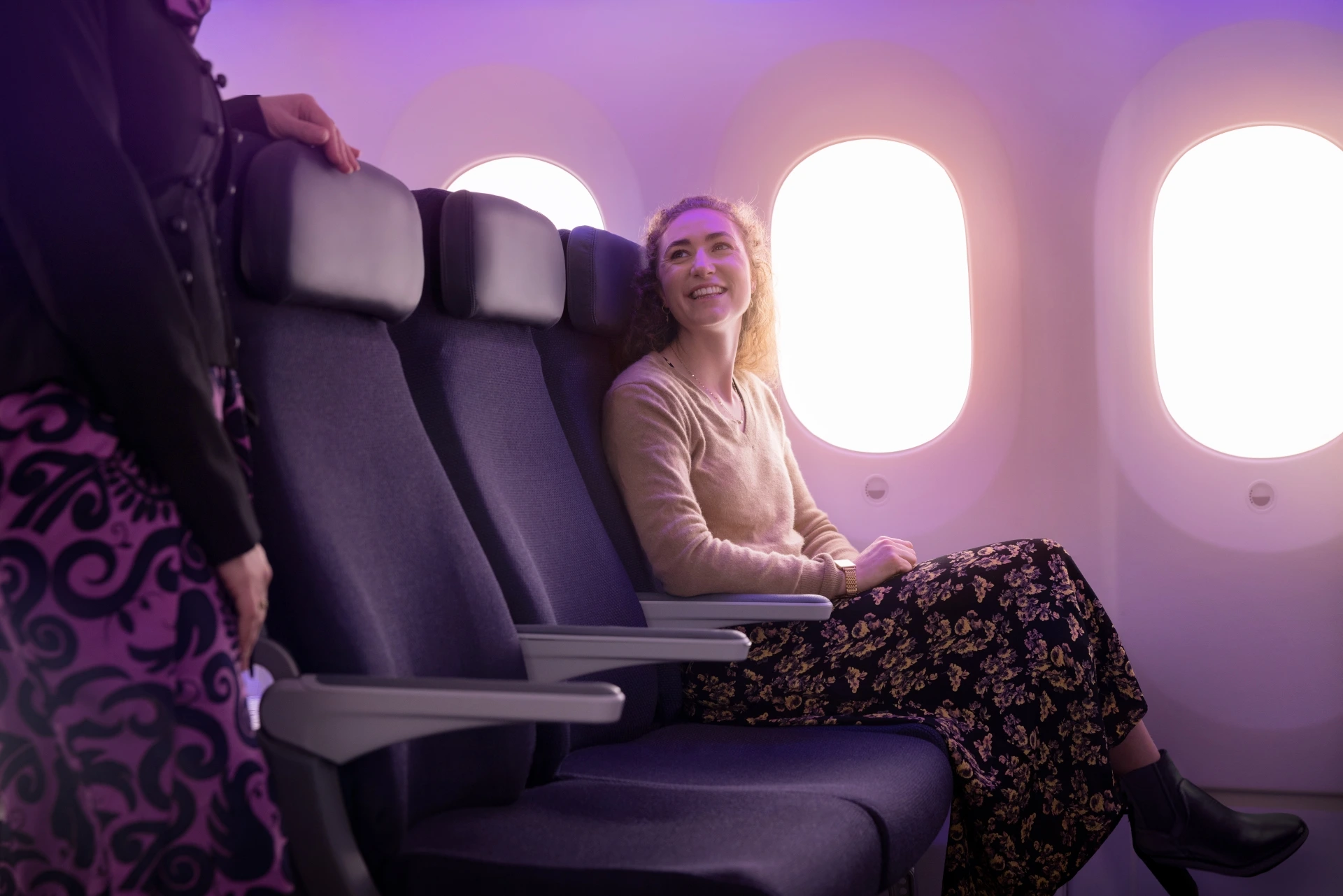
Air travel has become an integral part of modern life, connecting people across continents with remarkable efficiency. While most passengers are familiar with the routine safety announcements before takeoff, few understand the reasoning behind these protocols that flight attendants diligently enforce.
Among these safety measures, the request to return seats to their upright position during takeoff and landing stands out as one that occasionally provokes mild resistance from comfort-seeking travellers.
 Photo: Riyadh Air
Photo: Riyadh AirUpright Seats During Take Off and Landing
The request isn’t merely procedural bureaucracy or an arbitrary rule designed to inconvenience passengers during those precious final minutes of relaxation. Aviation experts emphasise that this requirement, like most airline safety protocols, stems from decades of research, incident analysis, and a deep commitment to passenger well-being during the most critical phases of flight. Understanding the rationale behind these measures can help passengers appreciate the importance of compliance for their safety and fellow travellers.
Extra Caution
Aviation safety records consistently show that takeoff and landing constitute the highest-risk segments of any flight. Though these phases represent only about 7% of total flight time, they account for approximately 44% of fatal accidents worldwide. This statistical reality underscores why airlines implement additional precautions during these critical periods.
 Photo: SuperJet International; Wikimedia Commons
Photo: SuperJet International; Wikimedia CommonsEmergency Response
“An upright seat position significantly improves a passenger’s ability to brace or react appropriately during unexpected turbulence or emergencies,” explains Colonel Rajgopalan, founder of Aviation Training India.
“Those few seconds of readiness can make a meaningful difference in passenger outcomes during critical incidents.”
Colonel Rajgopalan, Founder, Aviation Training India
The locked, upright position ensures your body maintains proper alignment with the seat’s safety features, maximising the effectiveness of restraint systems during sudden deceleration or impact forces. A reclined seat compromises this alignment, potentially increasing injury risk to both yourself and passengers seated behind you.
 ICAO
ICAORegulation
This safety measure isn’t arbitrarily determined by individual airlines but stems from the International Civil Aviation Organisation (ICAO) Manual on Information and Instructions for Passenger Safety. In India, these regulations are enforced through the Directorate General of Civil Aviation (DGCA), which mandates airlines to implement comprehensive safety briefings.
Aviation expert Dhairyashil Vandekar notes, “Along with keeping window blinds open and stowing tray tables, maintaining seat backs in the upright position forms part of essential safety procedures. ICAO guidelines emphasise verbal instructions and visual demonstrations to enhance passenger safety awareness and improve survivability rates during emergencies.”
How Seat Position Affects Injury Risk
Evacuation Readiness
“An upright seat provides a more stable foundation for your body during potential impact scenarios,” Colonel Rajgopalan further explains.
“This position significantly reduces injury risk by optimising your body’s ability to absorb forces appropriately.”
Colonel Rajgopalan, Founder, Aviation Training India
Beyond immediate impact protection, the upright position facilitates rapid evacuation if necessary. With all seats properly positioned, evacuation pathways remain clearer and more accessible, potentially saving crucial seconds during emergency evacuations when every moment counts.
 Photo: Delta Air Lines
Photo: Delta Air LinesInjury Prevention
In the unfortunate event of a crash landing or sudden deceleration, seat position dramatically affects injury patterns. When a seat is reclined, a passenger’s head trajectory during forward momentum could result in a more severe impact with the seat ahead. The upright position mitigates this risk by maintaining appropriate distances between passengers and surrounding structures.
Comfort vs. Safety: Finding the Balance
When You Can Recline
During the cruise phase of flight, when the aircraft has reached its designated altitude and stable flight conditions, passengers typically have the freedom to recline their seats for greater comfort. This represents the majority of most flights, offering ample opportunity for relaxation.
Courteous Considerations
Even during periods when reclining is permitted, aviation etiquette suggests checking with the person behind you before adjusting your seat position. This small courtesy acknowledges the shared nature of the confined cabin space and demonstrates respect for fellow travellers’ comfort, particularly important on full flights or for passengers with longer legs.
 Air New Zealand New Economy Class Seats on 787 | Photo: Air New Zealand
Air New Zealand New Economy Class Seats on 787 | Photo: Air New ZealandBottom Line
While the request to return seats to their upright position might momentarily interrupt your comfort, understanding the safety rationale behind this protocol highlights its importance. These few minutes of proper positioning during takeoff and landing represent a small inconvenience compared to the significant safety benefits they provide.
Next time you hear this familiar announcement, you’ll appreciate that this simple action forms part of the aviation industry’s comprehensive approach to passenger protection during the most critical phases of flight!
Stay tuned with us. Further, follow us on social media for the latest updates.
Join us on Telegram Group for the Latest Aviation Updates. Subsequently, follow us on Google News
Why Aircraft Toilets Gets Clogged During Your Flight?
The post Why You Told to Upright Your Seats During Takeoff and Landing? appeared first on Aviation A2Z.












![Pobicie w gminie Żmudź. Dwie kobiety zaatakowały 21-latkę, z którą wcześniej imprezowały [ZDJĘCIA]](https://lubiehrubie.pl/wp-content/uploads/2025/06/20250615_145315_001.jpg)